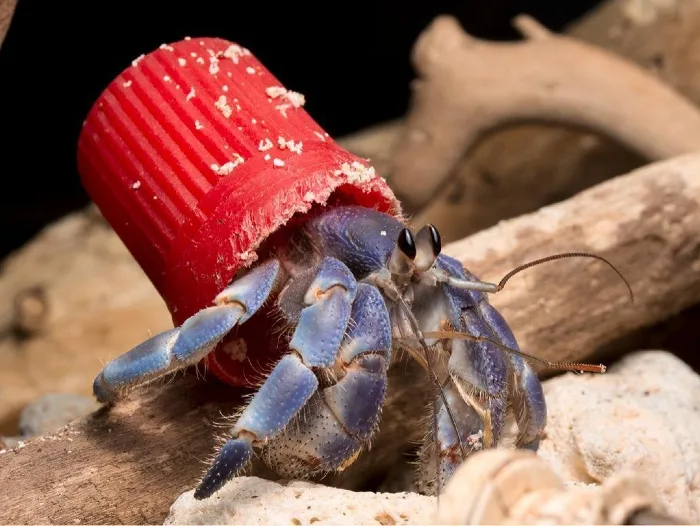In the lush, sun-drenched tropical coastlines, a peculiar and concerning trend is emerging. Terrestrial hermit crabs, those soft-bodied crustaceans found near water, are ditching their traditional homes – discarded mollusk shells – for something far more synthetic: plastic waste. This startling behavior highlights a grim reality of environmental degradation and poses pressing questions about the future of these unique creatures.
Unnatural Homes in a Natural Habitat
The University of Warsaw’s Biological and Chemical Research Center and the Department of Zoology at Poznań University of Life Sciences have delved into this phenomenon. Their findings, published in Science of the Total Environment, reveal a disturbing shift in hermit crab behavior caused by the ever-growing plastic pollution, which now forms 85% of marine pollution globally. Most of this waste finds its way into our oceans through rivers, ultimately littering the coastlines that these crabs call home.
A Shell Game with Dire Stakes
Typically, terrestrial hermit crabs, belonging to the family Coenobitidae and inhabiting tropical coasts worldwide, use empty gastropod shells to protect their vulnerable abdominal area, known as the pleon. These shells offer not only protection from predators and dehydration but also play a crucial role in their social interactions, including mating rituals.

However, researchers have observed a worrying trend: an increasing number of these crabs are turning to plastic debris, often found on beaches, as an alternative to natural shells. This shift in behavior is influenced by various factors, such as the environmental abundance of plastic waste and the decreasing availability of natural shells, often due to human activities.
iEcology: A Digital Window into Ecological Changes
The research team employed a novel approach termed ‘internet ecology’ or iEcology. This method involves analyzing digital content like audio, videos, images, and user posts across social media and news platforms to understand ecological changes. Despite its growing validity in conservation studies, its application in ecology and evolution remains limited.
Photographer Shawn Miller’s work significantly contributed to this study. In 2014, he captured images of blueberry hermit crabs (Coenobita purpureus) using plastic waste as shells on Okinawa’s beaches, sparking the researchers’ interest.

By reviewing online images and literature, the team could expand their understanding of this behavioral shift. They identified 386 individual crabs across 10 of the 16 known terrestrial hermit crab species using artificial shells. Most of these were black and white plastic caps, with a minor percentage using metal or glass.
However, the study acknowledges potential biases in data collection, such as the ease of spotting contrasting plastic against natural backdrops and the observers’ inclinations to post unusual behaviors online.
The Bigger Picture: Evolution or Ecological Trap?
The study poses a critical question: Are these artificial shells leading hermit crabs down a new evolutionary path, or are they an ecological trap set by human-induced changes? While adapting to use plastic shells may seem ingenious, it’s a direct consequence of human environmental impact. The long-term effects of this adaptation on the evolution of terrestrial hermit crabs are yet to be fully understood.
More To Discover
- Using An Invasive Species To Solve Period Poverty In Africa, Sustainably
- How Chinese Gold Mining is Ravaging Cambodia’s Endangered Wildlife Sanctuary And No One Will Stop Them
- Carnegie Mellon Study Proves Grocery Delivery Is Less Sustainable than In-Store Shopping
- Canada Trails in the Fight Against Greenwashing
We Played A Big Role In This Sad Affair
This shift in hermit crab behavior is more than just an ecological curiosity; it’s a stark reminder of our impact on the planet. As these crabs make homes out of our plastic waste, we’re compelled to reflect on our environmental responsibilities and the urgent need to address the plastic pollution crisis. The fate of these small but significant creatures lies not just in their adaptability, but also in our hands.




















